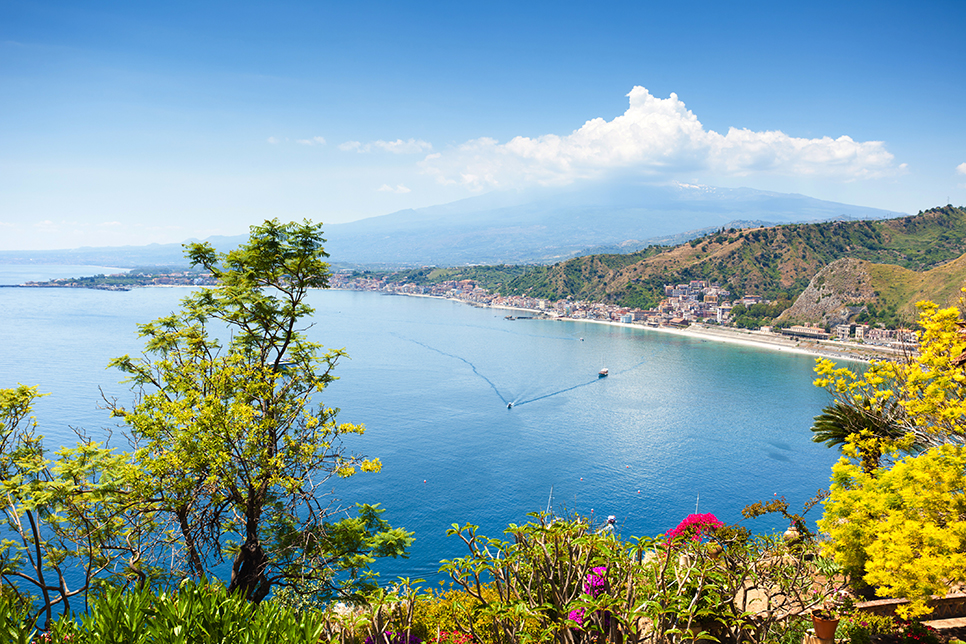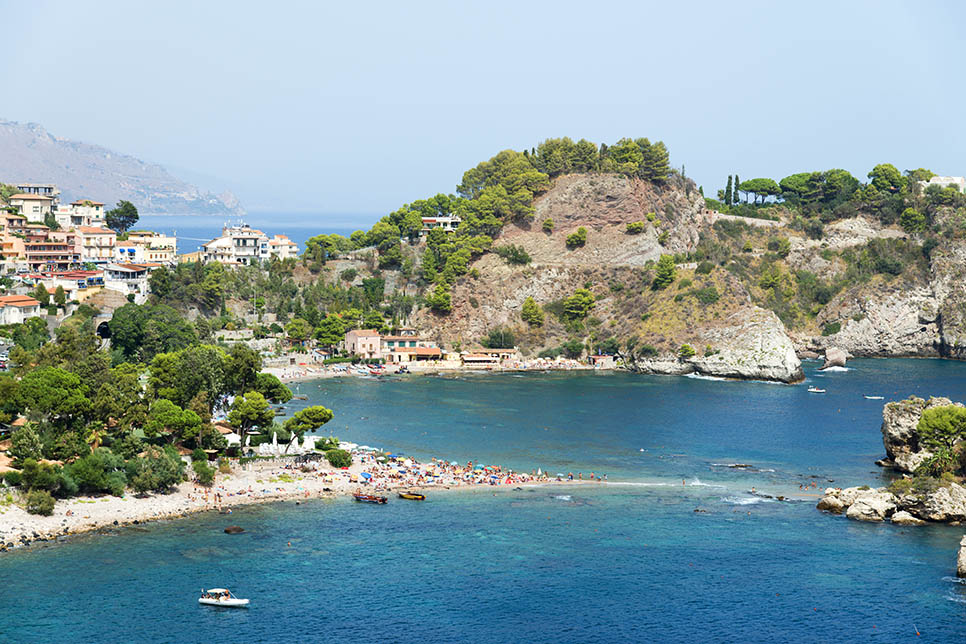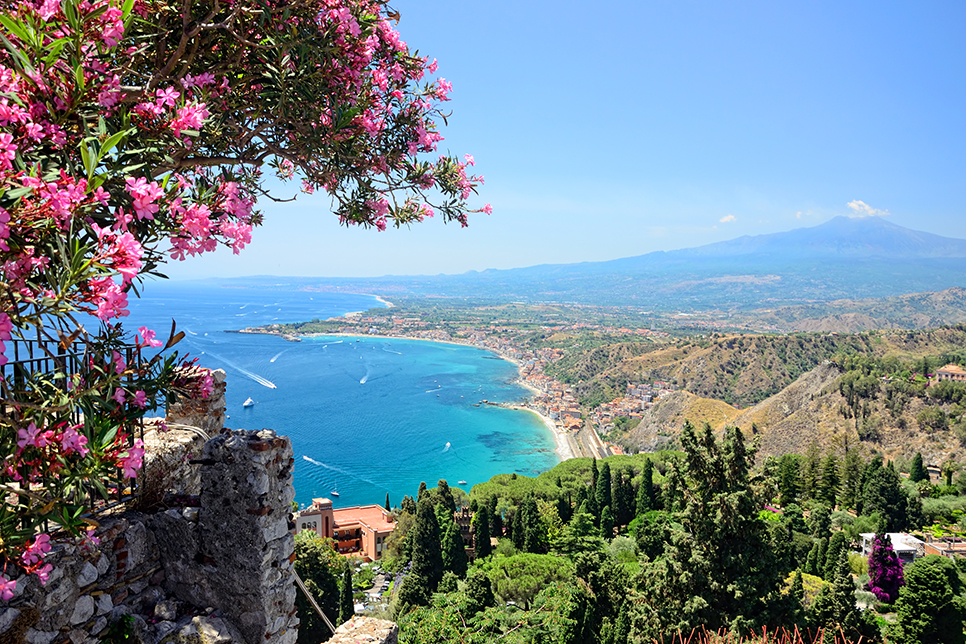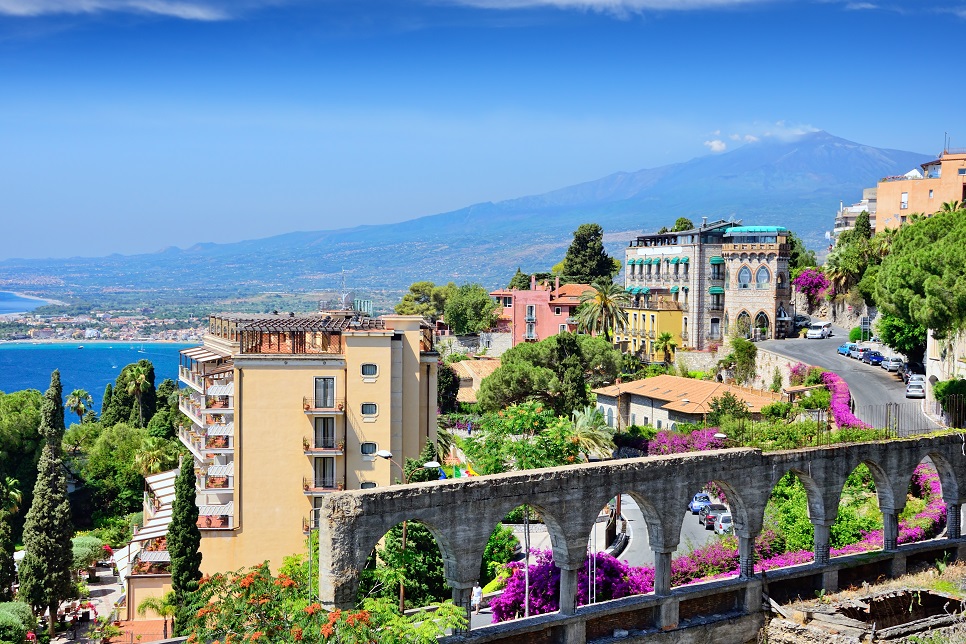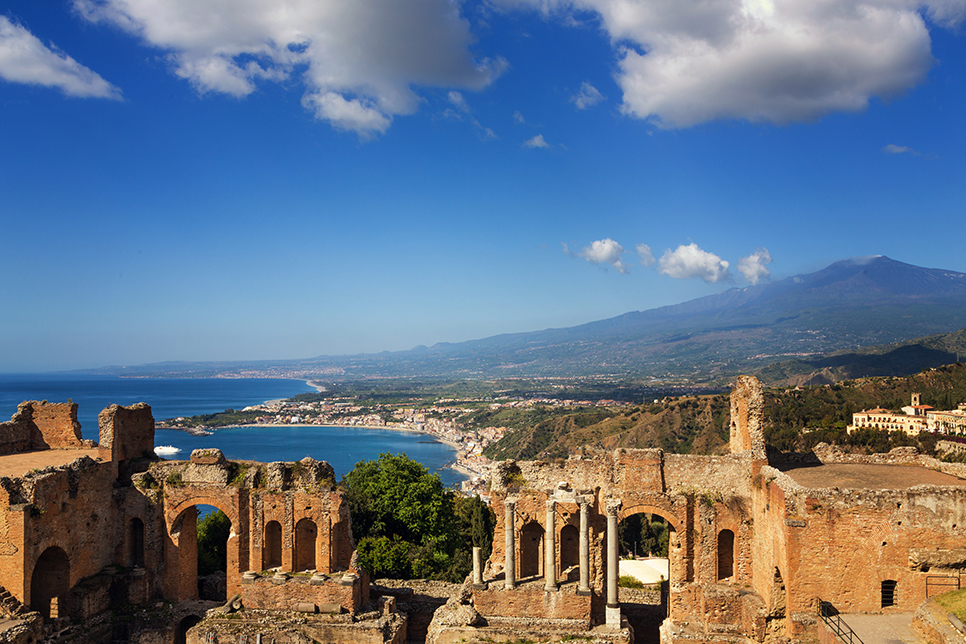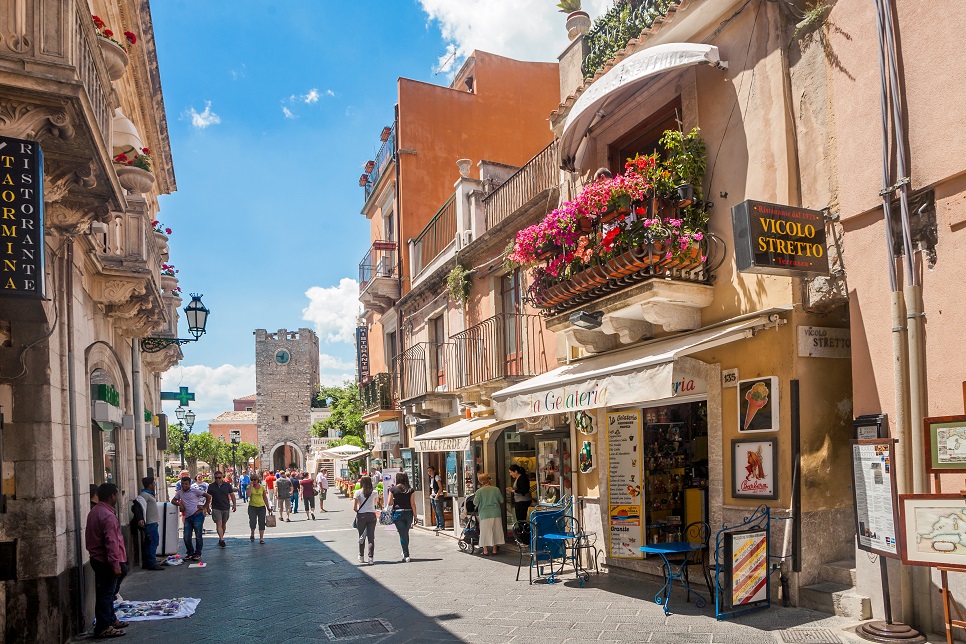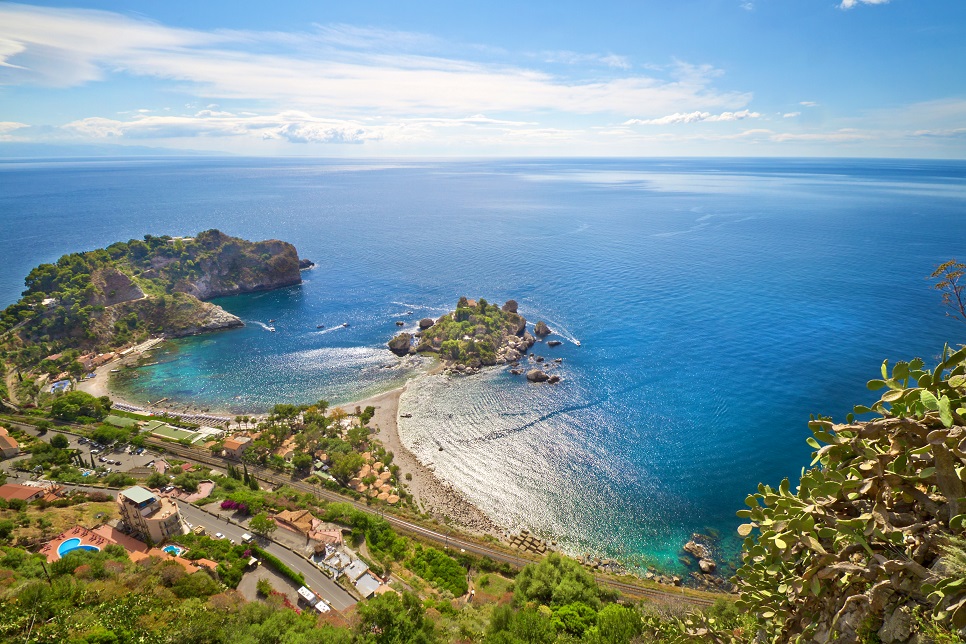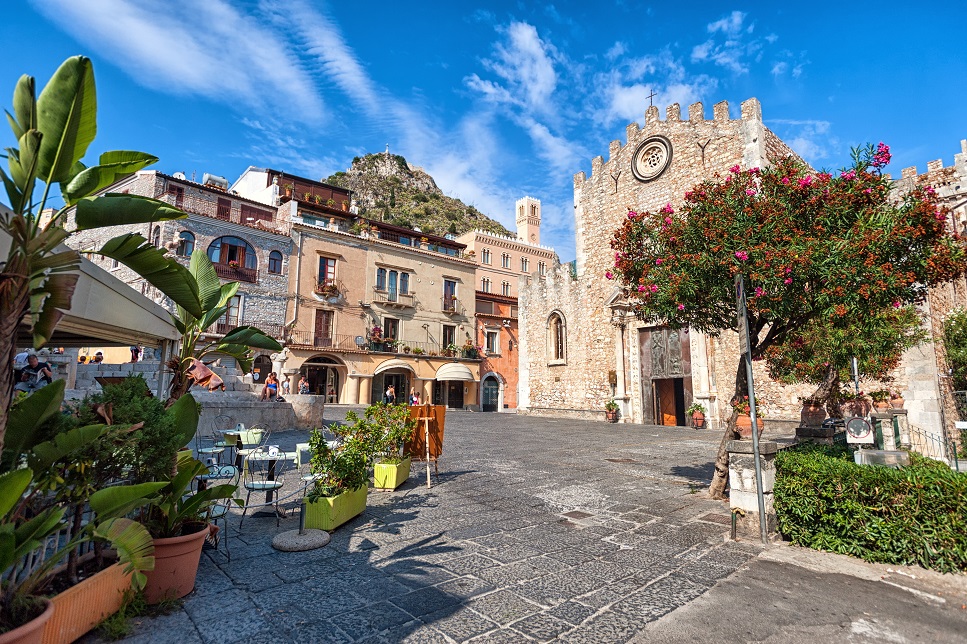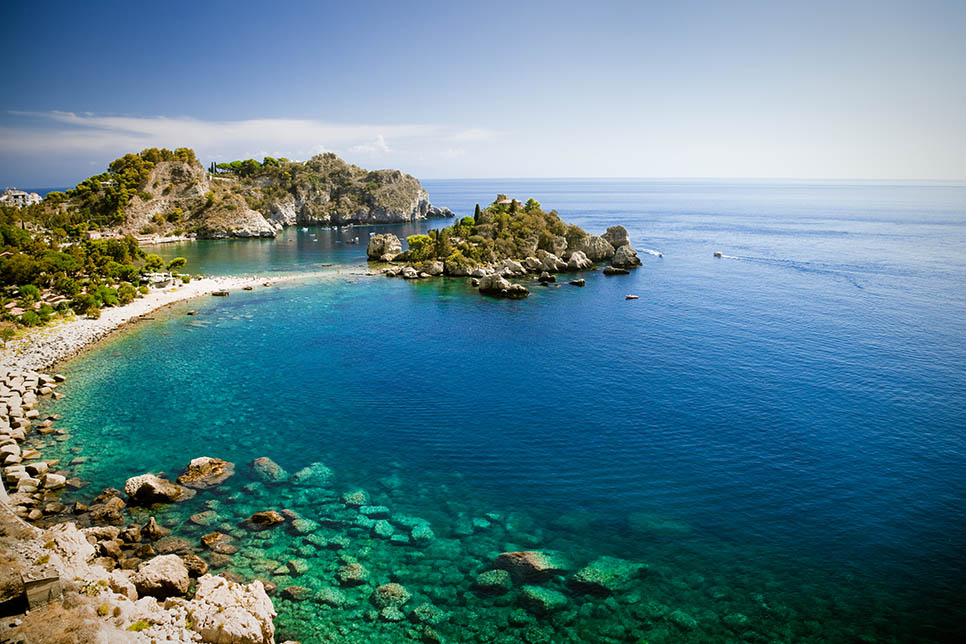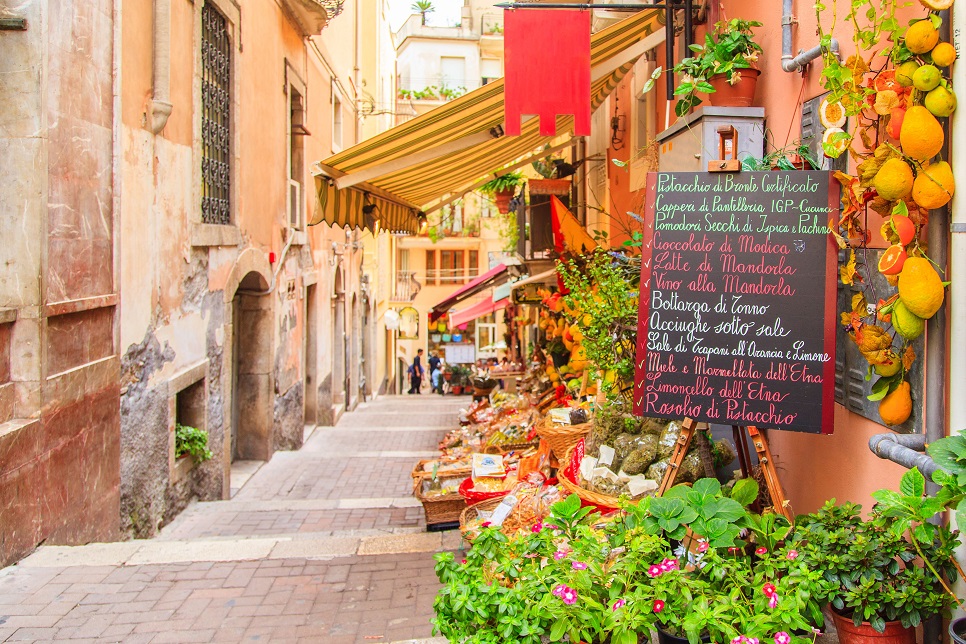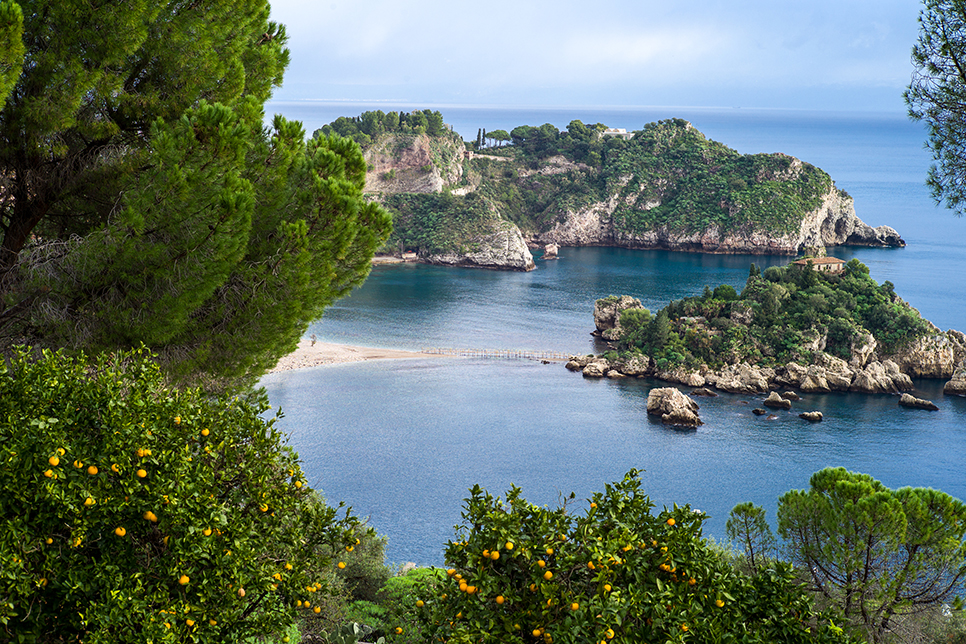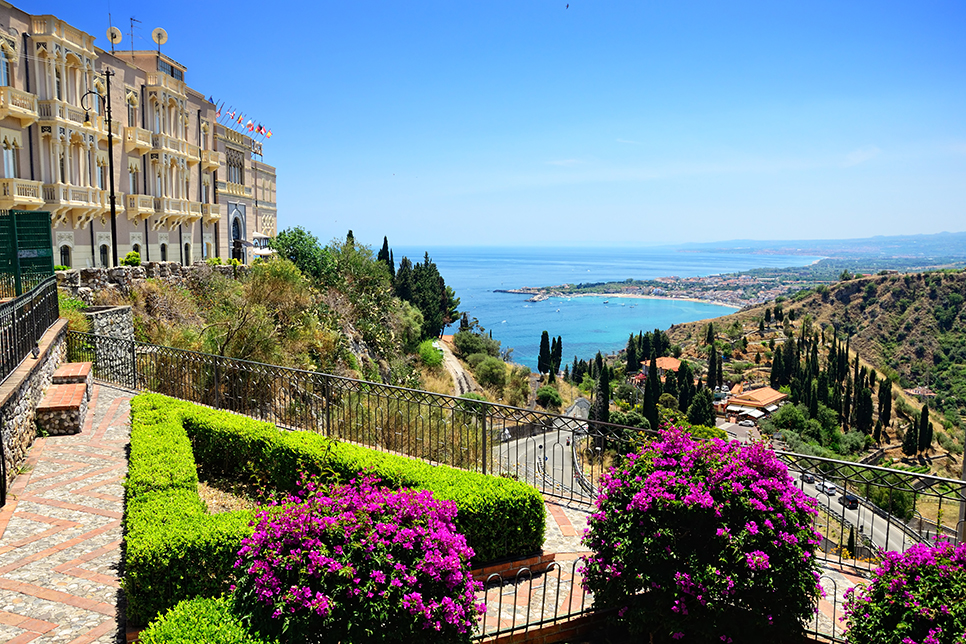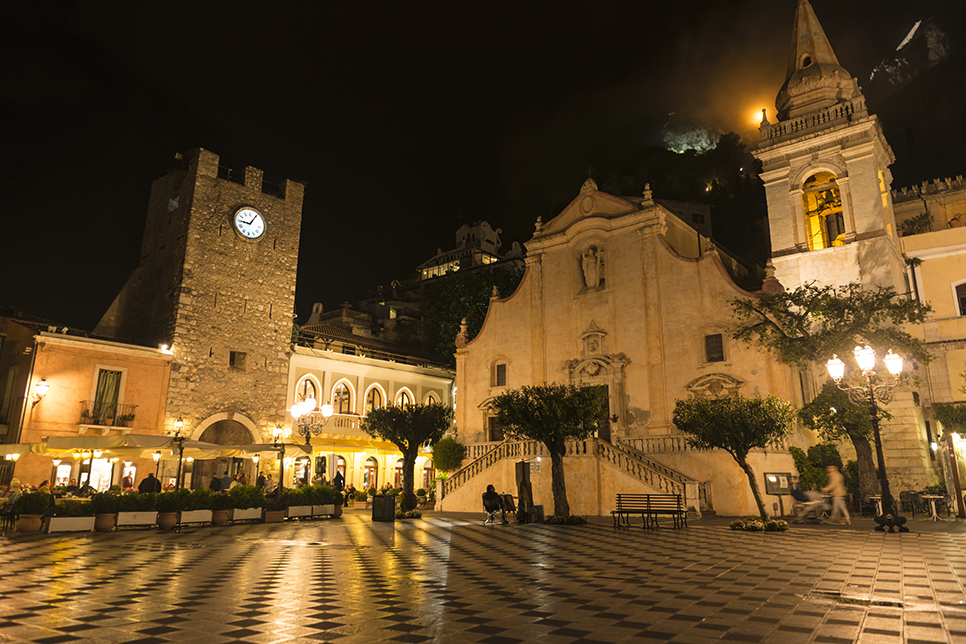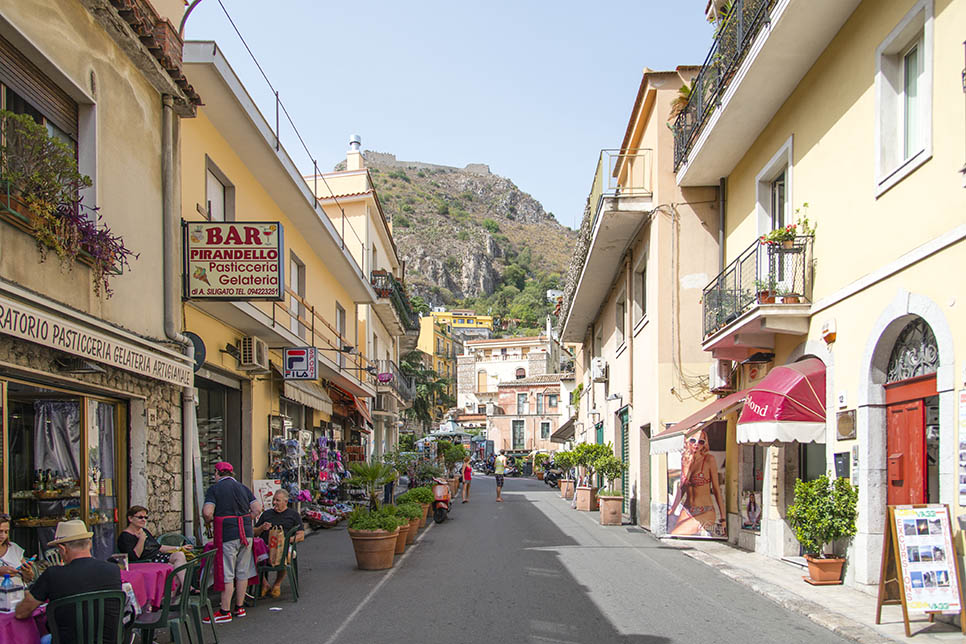For many years a favourite with the in-crowd, Taormina is relatively touristy compared with other Sicilian coastal towns, yet remains unarguably glamorous and unquestionably beautiful. This is partly due to its exquisite setting, in the shadow of Mount Etna but perched high on a rocky promontory with sweeping views over the Gulf of Naxos.
Founded in the 4th century BC, the town was invaded and conquered by everyone from the Greeks and Romans through to the Arabs, Normans, French and Spanish. However, it was not until the 18th century that the town was discovered by northern Europeans on the Grand Tour. Devotees have included DH Lawrence, Goethe, Cary Grant and Greta Garbo and its annual Film Festival continues to attract celebrities and film stars from around the world.
The main historical attraction is the Teatro Greco where shows have moved on from works by Euripedes and Aristophanes to fashion shows, concerts and film festivals.
Taormina’s main street, the Corso Umberto, is a window-shopper’s delight, lined with boutiques, and extending from the Piazza del Duomo at one end to the Palazzo Corvaja at the other. The latter is one of the most beautiful of the town’s remaining 14th and 15th century palaces, and today houses the tourist office and the Museo di Arte e Tradizioni Popolari. At the other end of the street, overlooking the baroque fountain in the Piazza del Duomo, the 13th century Duomo’s Renaissance doorway and fortress-like exterior leads through into a simple Gothic interior. Along the Corso Umberto, the panoramic terrace of Piazza IX April presents some of the best views from Taormina. Other favourite spots include the Teatro Greco and the public gardens (also known as the Villa Comunale or the Trevelyan Gardens).
There are several attractive beaches around Taormina. The most atmospheric is on the rocky island of Isola Bella while for those who prefer sandy beaches, a cable car runs down from Taormina to Mazzarò.
Taormina
Sicily's best-known coastal resort
